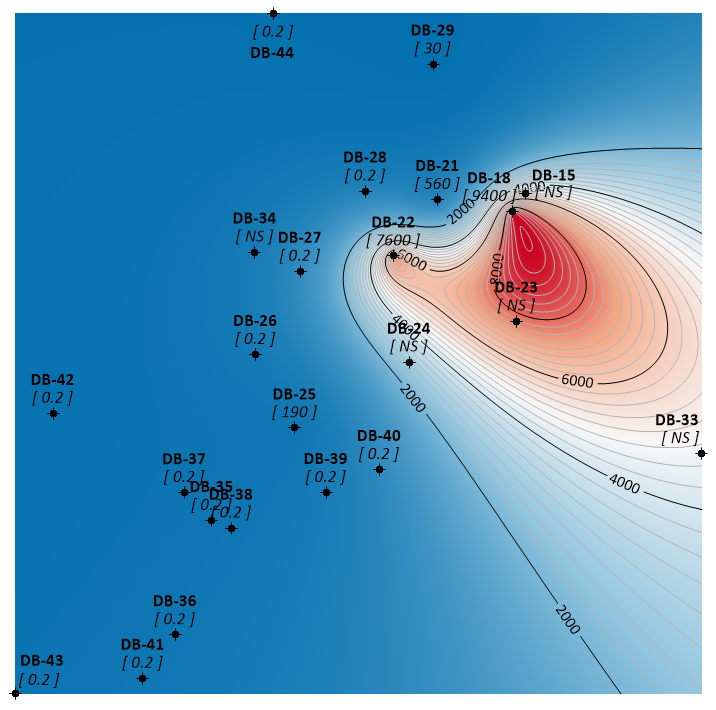The Ricker Method for Plume Stability
Contamination plumes pose significant challenges for environmental scientists and engineers working on remediation projects. Accurately assessing and managing these plumes is crucial to effective cleanup and protection of groundwater resources. One technique for evaluating the effectiveness of remediation efforts is the Ricker Method®.
What is the Ricker Method?
The Ricker Method® is a robust statistical tool designed to assess the stability of an entire contamination plume. Developed by Joe Ricker in 2008, this method offers a comprehensive approach to evaluating whether a contamination plume is expanding, contracting, or remaining stable over time. Rather than evaluable contaminant concentration changes well-by-well like many traditional methods, the Ricker Method provides a clearer picture of plume behavior by leveraging detailed statistical analyses of multiple sampling events for all monitoring wells. This is essential for making consistent informed decisions about site remediation strategies.
Since it’s development, the Ricker method has been used to derive several other valuable analysis methods including the Remediation System Benefit Analysis (RSBA®), Spatial Change Indicator™ (SCI) analysis, and Well Sufficiency Analysis™ tools.
Why the Ricker Method is Crucial for Remediation
Accurate Assessment of Plume Dynamics
One of the primary benefits of the Ricker Method is its ability to provide an accurate assessment of plume dynamics. Traditional methods might offer a snapshot view, but the Ricker Method gives a dynamic perspective, showing how the plume evolves over time. This is particularly important in environments where groundwater flow and contaminant dispersion can vary significantly.
Improved Remediation Planning
With a clear understanding of plume stability, environmental engineers can design more effective remediation plans. For instance, if the comprehensive analysis indicates that a plume is stable or shrinking, it may be feasible to reduce the intensity of remediation efforts, thus saving resources and costs. Conversely, if the plume is expanding, immediate and more aggressive action can be taken to contain and treat the contamination.
Regulatory Compliance
Environmental regulations often require detailed documentation and proof of contamination management. The Ricker Method provides robust statistical analysis, qualitative evaluation, and visual representation that can support compliance with these regulations. It offers a scientifically validated approach to demonstrate that a plume is being monitored and managed effectively.
Implementing the Ricker Method
Golden Software’s Surfer is a powerful tool for visualizing and analyzing geospatial data, making it an ideal platform for implementing the Ricker Method. To learn more about using Surfer to perform the Ricker Method statistical analysis on your contamination plume data, check out our KB article Calculate contamination plume stability statistics in Surfer.




